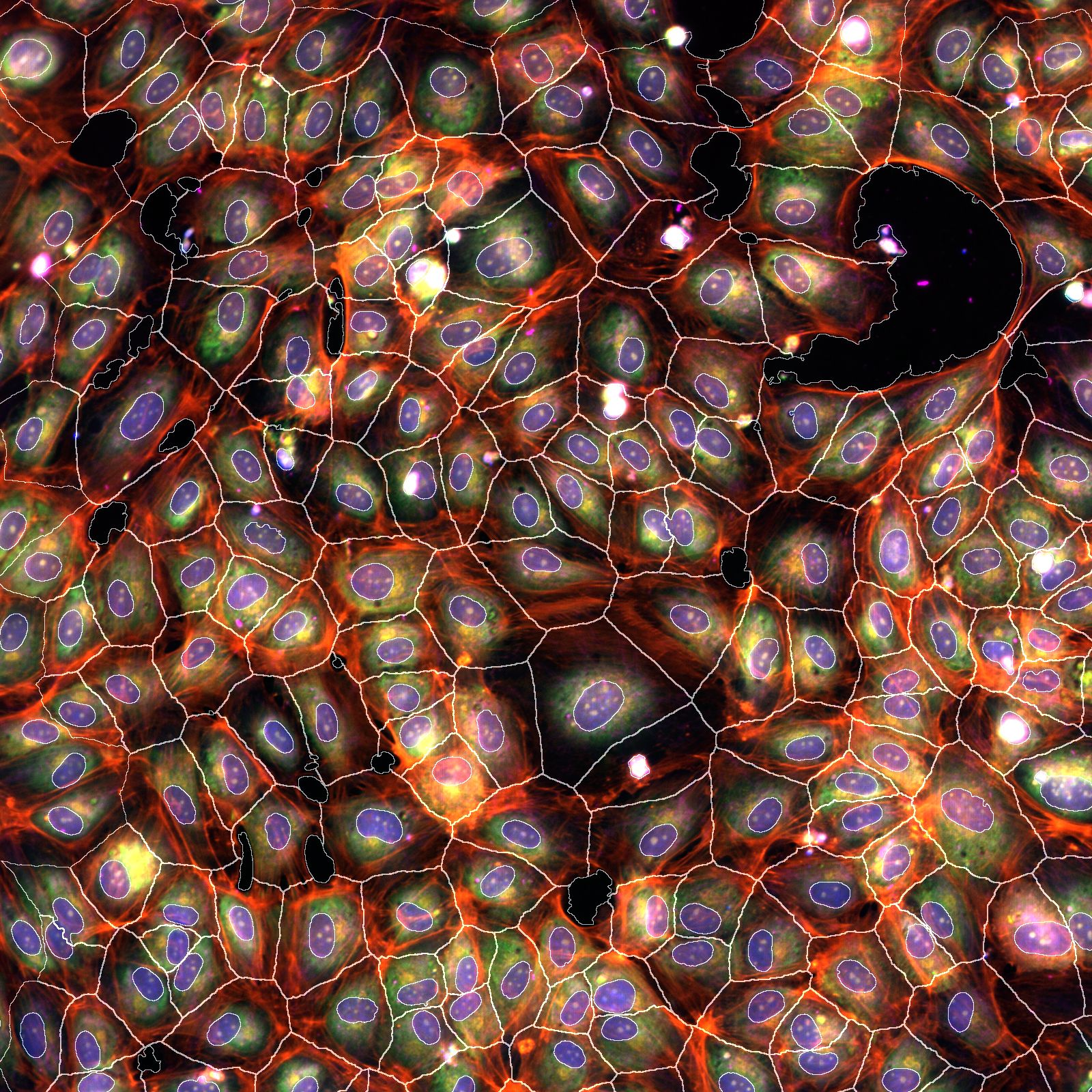Machine Vision Helps Spot New Drug Treatments

Web users searching for photos and cops looking for suspects in video already benefit from software that understands the content of images. Chris Gibson says it can also make it easier to find treatments for diseases not targeted by existing drugs.
“By combining robotics and machine vision, we can work at large scale on hundreds of diseases simultaneously, using a small number of people,” says Gibson, who is CEO and cofounder of the 40-person startup Recursion Pharmaceuticals.
Recursion uses software to read out the results of high-throughput screening, which automates drug testing in cells. That isn’t a new idea, but Recursion uses algorithms that inspect cells at an unusual level of detail. The software measures a thousand features of a cell, such as the size and shape of its nucleus or the distance between different internal compartments.
In the company’s labs in Salt Lake City, automated microscopes feed image recognition software that scrutinizes hundreds of thousands of images each week of human cells modified to model genetic diseases. They’re watching for signs that one of the more than 2,000 compounds Recursion is testing on sick cells can make them look more like healthy ones.
Recursion says it has already identified 15 potential treatments for rare diseases, defined as those afflicting fewer than 200,000 people in the U.S. Altogether, rare diseases affect an estimated 10 percent of Americans, and the vast majority lack approved drug treatments.
One drug candidate identified by Recursion is expected to enter clinical trials later this year to treat cerebral cavernous malformation, which causes brain lesions and affects 60,000 people in the U.S. The company projects that next year three other treatments will receive the initial FDA permission needed for trials to take place.
Rather than testing completely new drugs, the company tests known ones in the hope of finding valuable new uses for them. Recursion has struck a partnership with pharma giant Sanofi to test drugs that got part of the way through the development process or clinical testing but didn’t make it to market.
The startup has received $19 million in investment from funders including Obvious Ventures, the VC firm cofounded by Twitter cofounder and onetime CEO Evan Williams.
The image-processing software Recursion uses originated in a package developed in the lab of Anne Carpenter at the Broad Institute of Harvard and MIT, whose group is working on extracting information from biological images. She says Recursion’s strategy allows it to identify potential treatments without lengthy, expensive investigations into the mechanism of a particular disease. Most of the conditions the company is seeking treatments for are not well understood at a cellular and molecular level.
“The beauty is that they don’t have to dig into the full detail of what a [diseased] cell’s appearance means; they just have to find something to reverse it,” says Carpenter, who is an advisor to the company. Digging into the underlying biology only at a later stage means that work can be more focused and efficient, she says.
David Swinney, CEO of the Institute for Rare and Neglected Diseases Drug Discovery, says that Recursion has hit on a worthwhile application for Carpenter’s software, which has primarily been used in fundamental research. But it has yet to be proved that postponing the task of delving into a disease’s biology will necessarily make marketable treatments easier to find, he says. Understanding the mechanisms of disease and how they can be altered will still be a challenge.
Gibson says that’s why Recursion will partner with pharma companies well equipped for that work to develop potential treatments it discovers. He’s also betting that over time the data generated as its automated lab churns away will become a resource that software can mine to help explain why certain drugs work or suggest the most promising avenues to explore.
Keep Reading
Most Popular
Large language models can do jaw-dropping things. But nobody knows exactly why.
And that's a problem. Figuring it out is one of the biggest scientific puzzles of our time and a crucial step towards controlling more powerful future models.
How scientists traced a mysterious covid case back to six toilets
When wastewater surveillance turns into a hunt for a single infected individual, the ethics get tricky.
The problem with plug-in hybrids? Their drivers.
Plug-in hybrids are often sold as a transition to EVs, but new data from Europe shows we’re still underestimating the emissions they produce.
Stay connected
Get the latest updates from
MIT Technology Review
Discover special offers, top stories, upcoming events, and more.